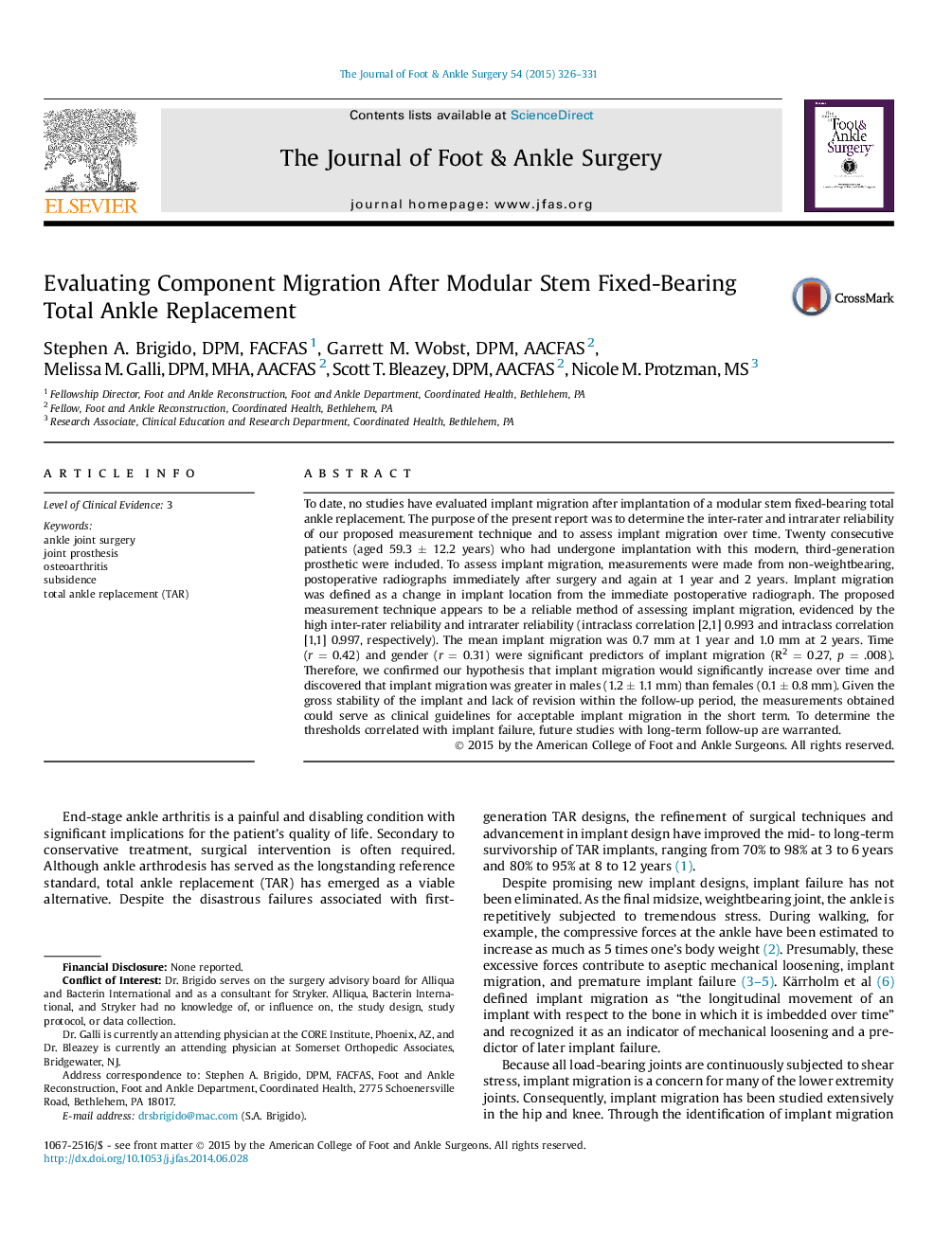| Article ID | Journal | Published Year | Pages | File Type |
|---|---|---|---|---|
| 2719369 | The Journal of Foot and Ankle Surgery | 2015 | 6 Pages |
To date, no studies have evaluated implant migration after implantation of a modular stem fixed-bearing total ankle replacement. The purpose of the present report was to determine the inter-rater and intrarater reliability of our proposed measurement technique and to assess implant migration over time. Twenty consecutive patients (aged 59.3 ± 12.2 years) who had undergone implantation with this modern, third-generation prosthetic were included. To assess implant migration, measurements were made from non-weightbearing, postoperative radiographs immediately after surgery and again at 1 year and 2 years. Implant migration was defined as a change in implant location from the immediate postoperative radiograph. The proposed measurement technique appears to be a reliable method of assessing implant migration, evidenced by the high inter-rater reliability and intrarater reliability (intraclass correlation [2,1] 0.993 and intraclass correlation [1,1] 0.997, respectively). The mean implant migration was 0.7 mm at 1 year and 1.0 mm at 2 years. Time (r = 0.42) and gender (r = 0.31) were significant predictors of implant migration (R2 = 0.27, p = .008). Therefore, we confirmed our hypothesis that implant migration would significantly increase over time and discovered that implant migration was greater in males (1.2 ± 1.1 mm) than females (0.1 ± 0.8 mm). Given the gross stability of the implant and lack of revision within the follow-up period, the measurements obtained could serve as clinical guidelines for acceptable implant migration in the short term. To determine the thresholds correlated with implant failure, future studies with long-term follow-up are warranted.
